Coal mine locomotives
Calgary’s Heritage Park is a wonderful living museum with numerous exhibits and displays documenting this area’s fascinating past. There are far too many things to see in a single day so for this pass our goal was to document some of the park’s extensive collection of railway equipment. The big working engines at the park get all the attention, but scattered about are some small mine locomotives (dinkys), and these will be the focus of this report. Some would say they are insignificant in comparison to their larger brethren, but I disagree. They have a fascinating story to tell.
Tucked away in a corner, the first ones we find are two specialized compressed air locomotives. These “Thermos bottles” worked underground in cramped conditions hauling cars about the mine. Since they used air they ran clean and any fire dangers were eliminated, especially important in a gassy coal mine. Operating at high pressures, sometimes as much as 600lbs – 800lbs per square inch or even more, they simply recharged when needed at various air stations located throughout the mine. Convenient, safe and simple.
These locomotives operated much like a traditional steam engine, only without a fire, and with high pressure air providing the muscle, instead of steam. There was no operators cab, due to cramped conditions in a mine, and instead they rode at the back out in the open.
These two examples were built by the HK Porter Company (or simply “Porter”) of Pittsburgh Pennsylvania. They were the most prolific builder of underground locomotives and so it’s not surprising these two engines with different lineages share a connection between them.
The first and larger of the two (the rust coloured one) was built by the Porter company in 1909. It last worked for the Crowsnest Pass Coal Company near Fernie BC (technically that pass is 60km east of Fernie – odd). Prior to that in worked at a coal mine in Canmore Alberta and earlier still at an industrial site or plant out east in Quebec – details on its past are sketchy and specific dates are unknown.
The second smaller locomotive (the white-ish one) is the senior of the two having been built in 1902, again by Porter. Originally it worked at the Bankhead Coal Mines at its namesake town in present day Banff National Park, After that mine closed in the early 1920s it found work at the same Crowsnest Pass Coal Company.
It’s not clear when these engines were retried and what happened to them before being put on display at Heritage Park. One can only assume they lead workaday lives.
Oddly, these two are of a different gauge – that being the width between the tracks. According to published data both are said to be 42” yet the older one is clearly narrower, say 24” and yet they both according to research worked for this same company. It would be strange to have two separate gauges within one mine, although not unheard of. Or perhaps that company had more than one mine, one using the wider gauge and the other the narrow? Until solid data is found however, we can only speculate. If our readers know anything, please chime in.
Another former Bankhead Mines underground locomotive still exists and there is a link below to read about it.
Also coming from the Crowsnest Pass Coal Company is a small saddle tank engine, so named for the U shaped water cistern that sits over the boiler. This was a traditional steam locomotive in the sense it used a fire to produce steam and this would have kept it above ground, for obvious reasons – smoke and fire being bad in a coal mine. One can assume it was used to shuttle cars about the wash plant or tipple. The example, also dating from 1902, was built by the Vulcan Iron Works of Wilkes-Barre Pennsylvania.
Keeping this locomotive company is a fairly typical underground coal car, a rickety looking thing with wooden sides (easy to replace as they wore out).
The Crowsnest Pass Coal company, sometimes shown as the Crow’s Nest Pass Coal Co., operated in the Fernie area from the late 1890s until the late 1950s. By that later dare, the markets for coal were declining and most such mines in BC and Alberta closed at that time. Now there is new demand for black stuff, but it all comes from large pit mines east of Fernie near Sparwood and Elkford, and not from inefficient underground operations like what we’ve been discussing. There is still coal in the Fernie area however.
In the early years compressed air locomotives were commonly used in coal mines (as were horses). By the 1920s, technology was changing and newer locomotives ran off of batteries or an overhead power line, trolley style. It appears though that many coal mining companies held on to their compressed air locomotives for a long time, keeping them in service for many decades. These organizations were always frugal and they got really good use out of their equipment.
Of the builders mentioned, the HK Porter Company built their last locomotives in 1950. although the company still exists to this day, making industrial metal cutters for example. Vulcan Iron Works, never near as big a builder as Porter, also shut down locomotive production in the 1950s.
You’ll note that I have used imperial measurements in this report, for simplicities sake, since this was the form used when these locomotives were built and in service.
Another ex-Bankhead Mine locomotive exists, on display at the original mine site, and to read about it click the link below…
Bankhead Alberta Ghost Town
An massive ex-CPR steam locomotive greets you at the entrance to the park and to find out more about it, click below…
CPR Selkirk Locomotive 5931.
If you wish more information on these locomotives, or this place, by all means contact us!
Date: May, 2013.
Location: Heritage Park Calgary, AB.
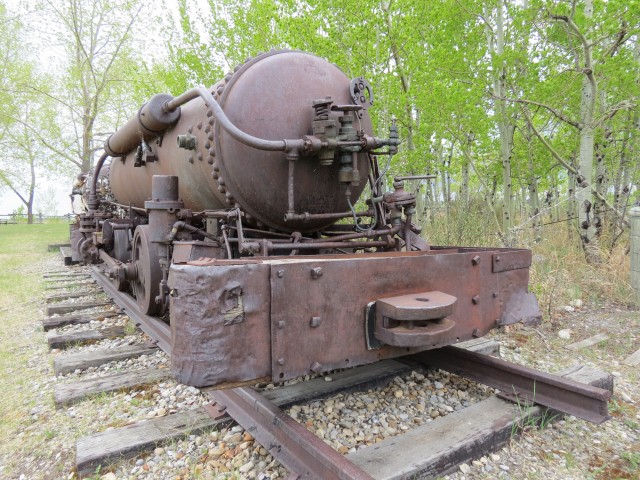
A Porter compressed air locomotive used in coal mines.
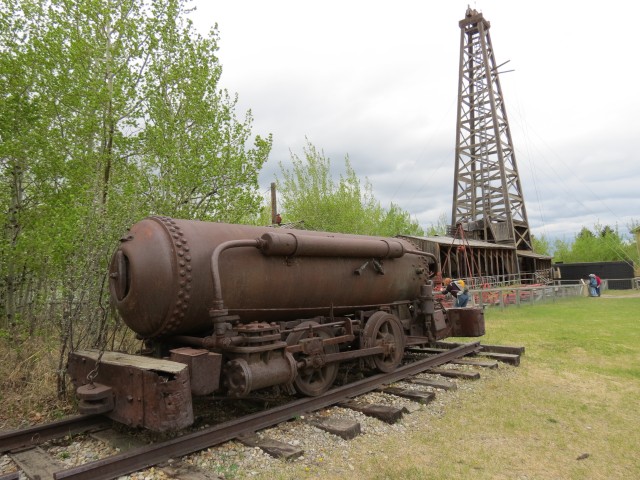
This engine’s last job was at the Crowsnest Pass Coal Company in Fernie BC.
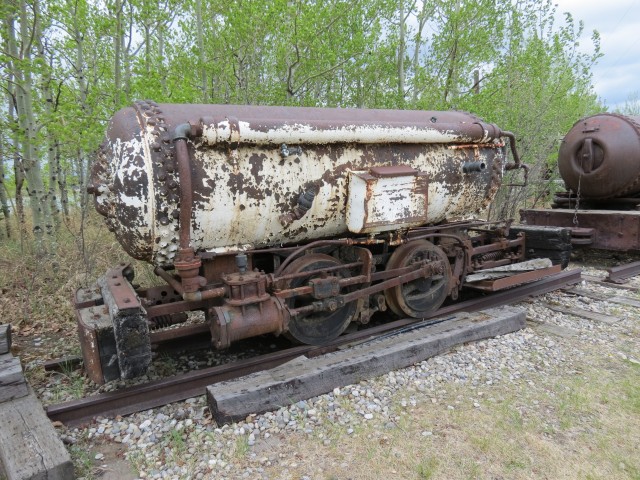
Another Porter locomotive, this one worked at the Bankhead Coal Mines in present day Banff National Park.
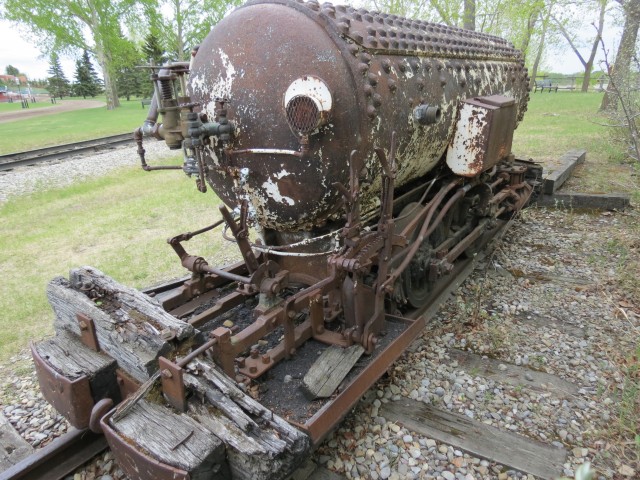
Research show that this little “Thermos bottle” was built in 1902.
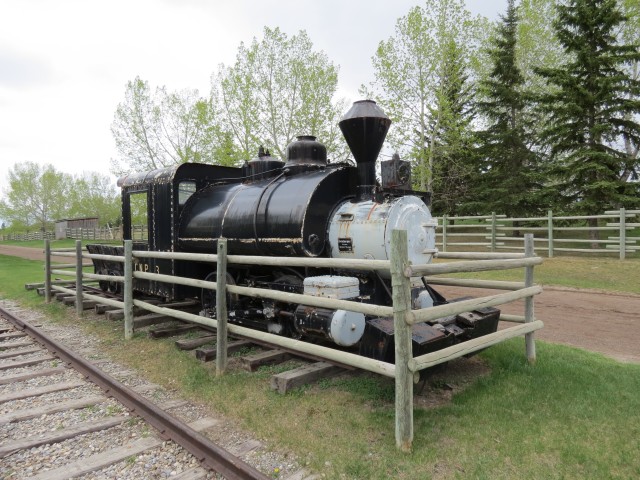
Also a coal mine locomotive, this one worked above ground.
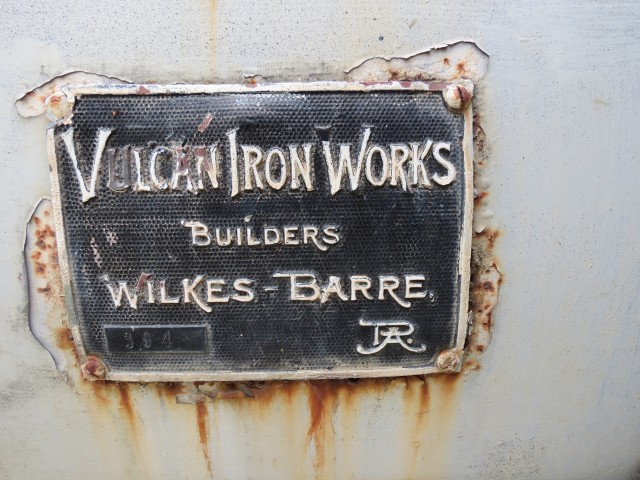
Vulcan Iron Works, Willkes-Barre, PA. Serial 394 (from 1902).

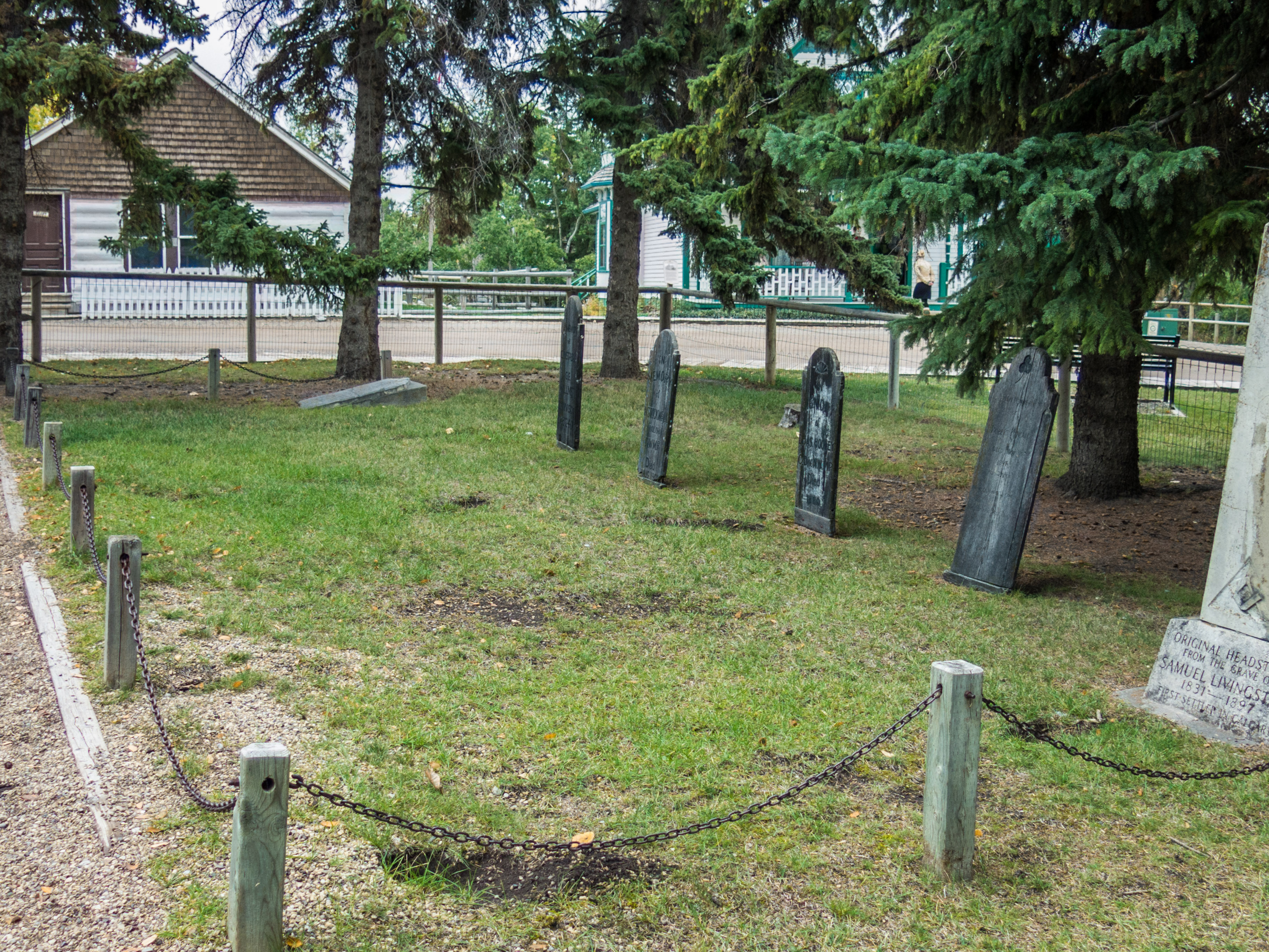
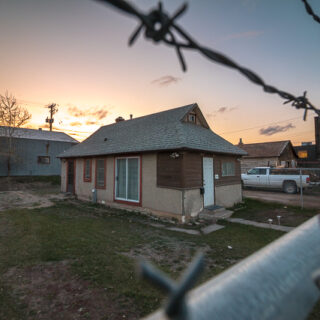
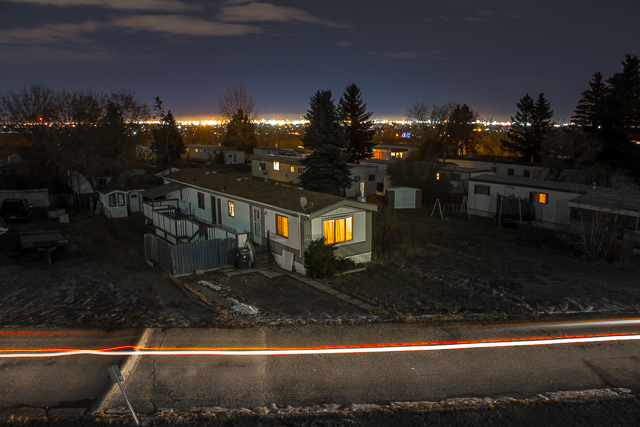
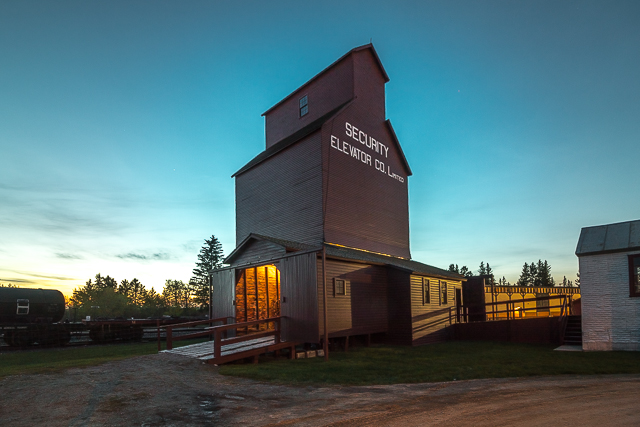
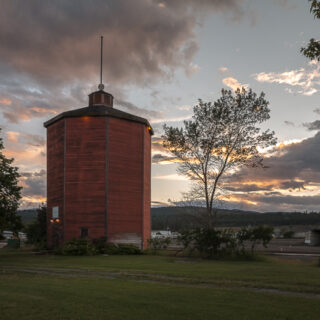
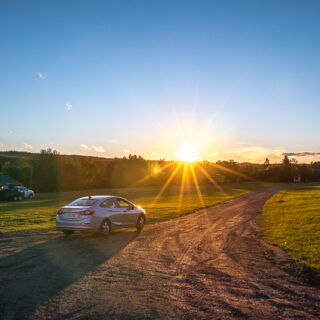
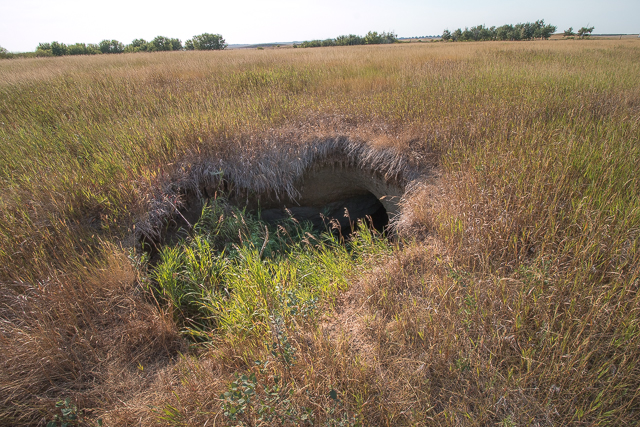
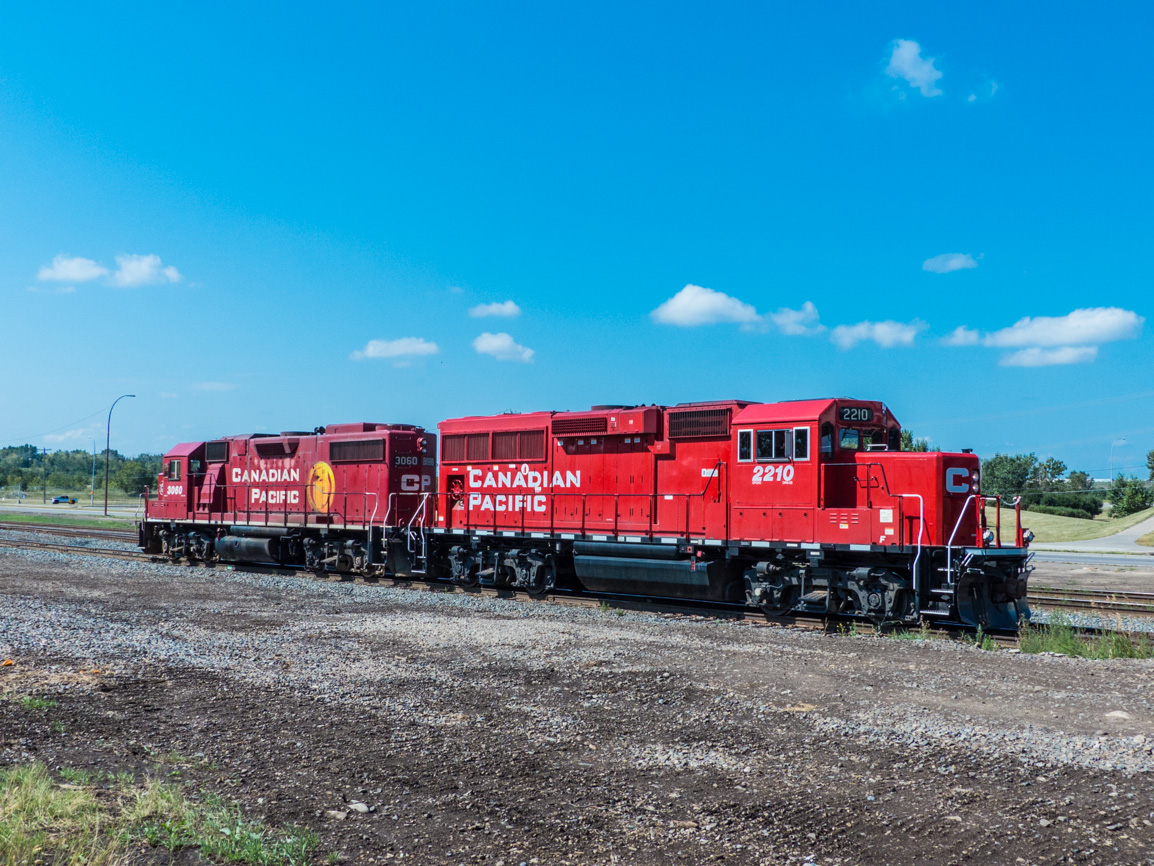
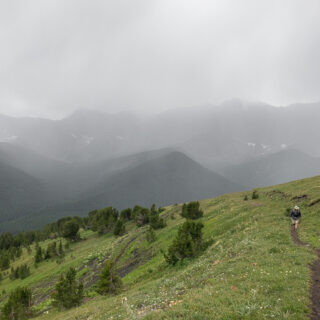
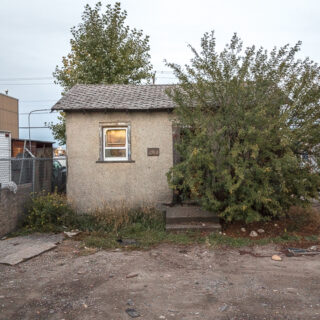
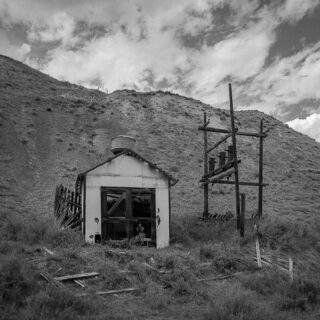
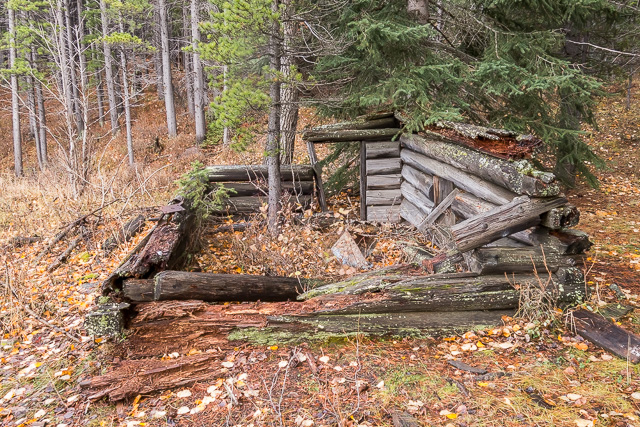
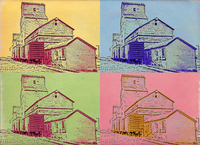






You’ll be pleased to know these and the entire “prospect ridge” natural resources section of the park reopened last year. The locomotives were (cosmetically) restored by some dedicated volunteers and look sharp!
We heard that and will have to check them out – thanks!
There’s one (compressed air locomotive) at the Britannia Mine info center too. Neat innovative piece of equipment!
There are a few of these around as it turns out. My Dad worked at the Britannia Mine.
Another type of locomotive used, that was similar to the compressed air locomotives, was what was called the “smokeless” locomotive. I don’t know if any were used in mines in Alberta and BC, but I saw one on display in Ontario, at the Fort Erie Railway Park. They were somewhat similar in design, but instead of air they used steam. They filled the tank with steam from a utility boiler. The smokeless locomotives were used to move freight around in factories and mills in southern Ontario.
Yes, I’m aware of them. They’re often referred to as “Fireless” locomotives. These would have not been used in undergound mines, however they worked well in industrial settings. They could charge from the factory boiler, a lack of fire/sparks made them very safe and finally the lack of smoke made them clean running. All pluses for that sort of environment. Thanks for commenting!
I found your pictures of great interest. H.K.PORTER built some 430 air locomotives between 1890 & 1931 The last in service were those at the Homestake Gold Mine at Lead, SD where the last were withdrawn in 1983-1984. The type of locomotive with rivetted air tanks were known as “Wart Hogs” Similar locomotives were built by BALDWIN who built 80 locomotives between 1874 & 1923 Their first industrial air locomotive c/n 4065/4-1877 built for Plymouth Cordage Co is now preserved. As is their last air locomotive also ex Plymouth Cordage Co c/n 57555/12-1923 Both of these locomotives were for surface use and were not mining locomotives. The DICKSON MANUFACTURING Co (ALCO from 1902) built 30 air mining locomotives between 1897 & 1902 (ALCO built a further 2 to DICKSON design in 1903) Also VULCAN IRON WORKS built 20 air mining locomotives between 1904 & 1912. These “Wart Hogs” were mainly medium pressure locomotives being charged to between 600 & 1,200 psi. In the 1920’s a demand grew in the smaller metal mines in the Rockies for a light low pressure locomotive running on the general “run of mine” air supply of around 100-120 psi using an air motor and chain drive. This type of locomotive were known as “Whistle Pigs”
The two most common builders being UNIVERSAL TRAMAIRE (Ed Fry) based in and around Denver from c.1920 to c.1970 and EIMCO in Salt Lake City (I have an EIMCO c/n 401-217/1968) I do not have build details for the EIMCO Type 401 locomotive. There were also many other builders of these simple locomotives in the USA & Canada (it also appears that “Whistle Pigs” were built in Japan!) This type of air locomotive is still in use mainly for development work in mines. In Europe a completely different type of ultra high pressure air locomotive was developed for Europe’s deep (up to 3,000′ to 5,000′), gassy and dusty coal mines. This type of locomotive uses seamless air cylinders which were charged up to 3,000 to 3,500 psi with working pressure of between 600 down to 80 psi The air being expanded up to four times (that said the last type of European air locomotive as built by ARN JUNG (D) Types Pz 20 to Pz 45 (the last five Pz 45’s being supplied to Poland as late as 1987), TSM (CZ) Type BVD-40 built between 1962 & 1974 and KONSTAL (PL) Ldp-40 eight being built between 1988 & 1992. As far as I know they are the most recent air locomotives built. Were all single expansion machines being charged to 3,000 psi with a working pressure of 600 psi via a four cylinder air motor a gearbox and chain drive. This type of locomotive is still in use in Poland and the former USSR. I hope that you will find this to be of use.
Yours Nick Kelly.
Awesome, thank you Nick for sharing so much helpful information. I would love to see your EIMCO, why not send us a pic?
Wow these are neat!